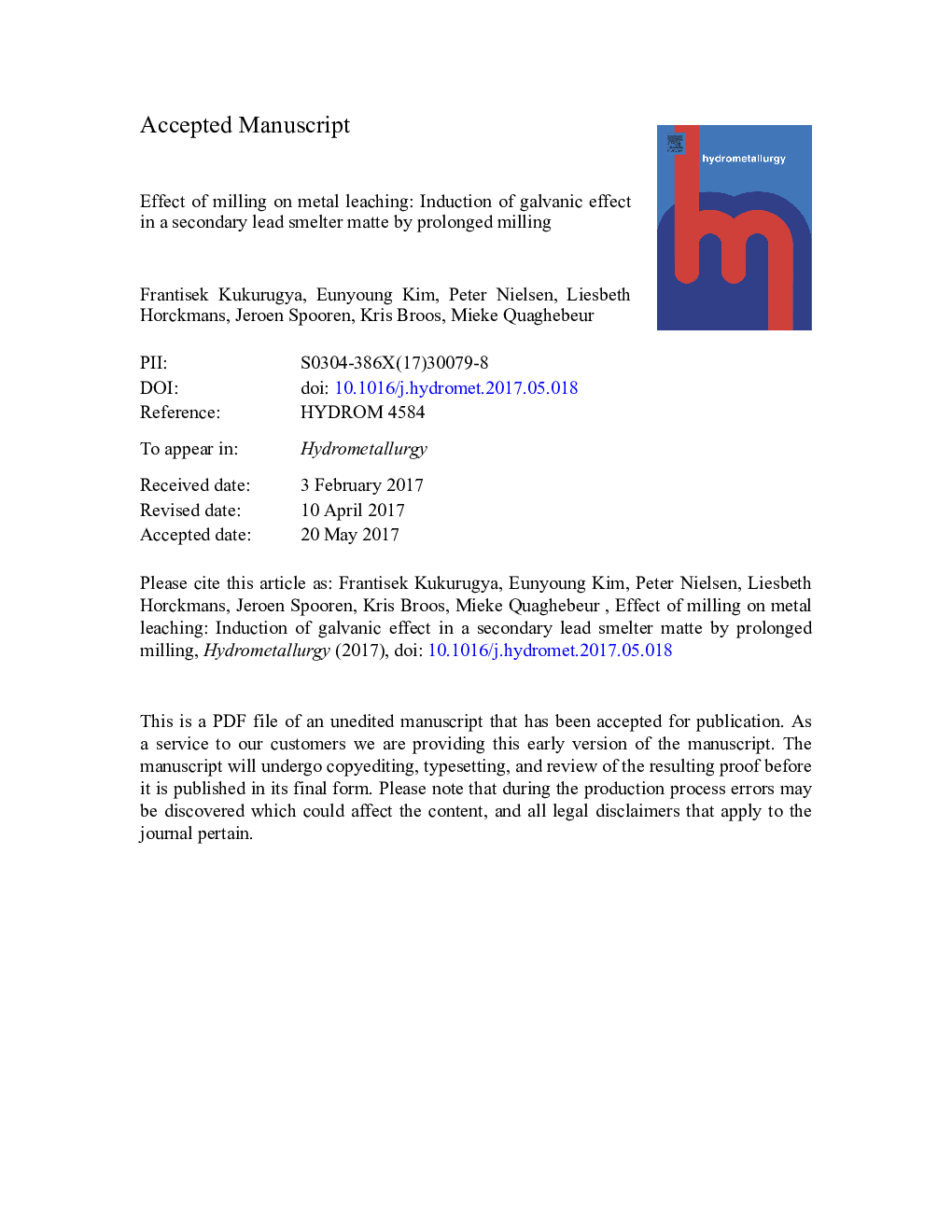| Article ID | Journal | Published Year | Pages | File Type |
|---|---|---|---|---|
| 4769284 | Hydrometallurgy | 2017 | 19 Pages |
Abstract
The effect of milling on the leaching of Pb (and other metals like Fe, Cu, Ni and Zn) from a secondary lead smelter matte was studied. The effects of milling time, milling environment (dry or wet milling) and leaching reagent (Fe(III)-HNO3 or citrate solution) on the leaching efficiency of metals were investigated. A 1-2Â mm ferromagnetic fraction of the matte, containing 54% Fe, 5.8% Pb, 24% S and minor levels of Cu (1.2%), Ni (0.2%) and Zn (0.3%), was used. Pb leaching in a Fe(III)-HNO3 solution was enhanced from 53% (no milling) to 85% after 5Â min of dry milling. Prolonged milling resulted in an agglomeration of particles causing a galvanic effect (between FeS and Pb), which led to electrochemical precipitation of Pb2Â + cations from the solution as PbS. Because of this electrochemical precipitation, almost no Pb2Â + was detected in the Fe(III)-HNO3 solution after 10Â min of dry milling. In order to avoid/reduce agglomeration and to obtain a finer particle size and higher leaching efficiencies, wet milling was carried out. The highest Pb leaching was obtained after 20Â min of wet milling (88% in the Fe(III)-HNO3 and 94% in the citrate solution). Citrate solution was more selective towards Pb leaching, with <Â 2% Fe leaching from the matrix material compared to 20-24% in the Fe(III)-HNO3 solution. The optimised milling and leaching steps were combined to attain a process for the selective recovery of valuable metals from secondary lead smelter matte.
Related Topics
Physical Sciences and Engineering
Chemical Engineering
Chemical Engineering (General)
Authors
Frantisek Kukurugya, Eunyoung Kim, Peter Nielsen, Liesbeth Horckmans, Jeroen Spooren, Kris Broos, Mieke Quaghebeur,
